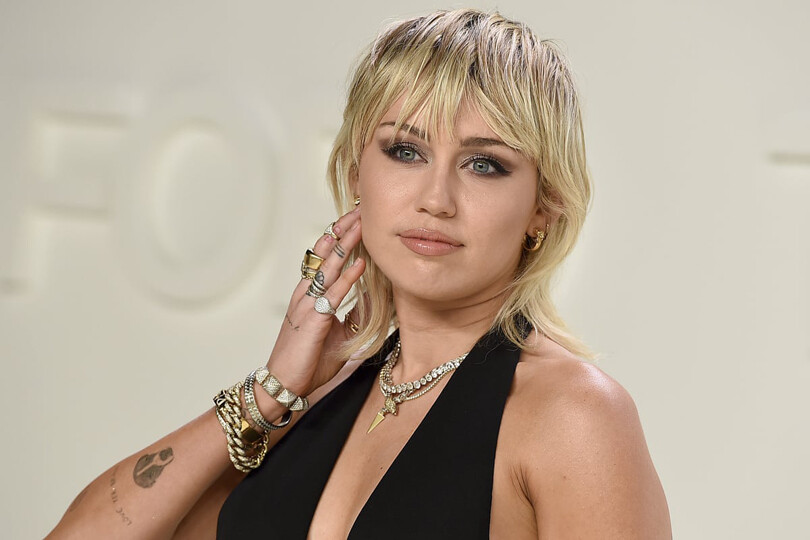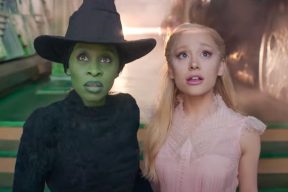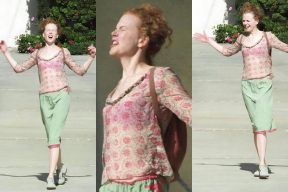We’re talking about the mullet, that polarizing style which epitomizes ‘80s hair has been reinvented for the now. The mullet may now go by a different name (in 2021 it’s known as the wolf cut), and be a little more refined in its stylings, but by-in-large the style is the same as it was over forty years ago. Business in front, party in the back.
We spoke to hairstylist Jason Lee, owner of Toronto’s Jason Lee Salon, for his thoughts on modern mullets and gender neutrality, who’s wearing this style best and how you can rock this throwback look.
Take us back! Who wore the style best back in the day?
“The mullet we know today actually originated in the early 1970s starting with Jane Fonda’s iconic mug shot, followed by David Bowie’s Ziggy Stardust. Playing with gender-neutral themes, Bowie’s ground-breaking Ziggy was an androgynous alien character who started a hair trend that would reign for 20 years. Moving into the 1980s, the mullet was the haircut du jour for so many, from Duran Duran’s Simon Le Bon to John Stamos, Joan Jett, Oprah, and the entire cast of the “Facts of Life” in the final seasons! Entering the ‘90s, hair trends were drastically changing, and Billy Ray Cyrus gave the mullet its last gasp at fame. This style was relegated to pop culture lore until 2020 when—appropriately and poetically—Miley Cyrus brought it back. Rihanna, Doja Cat and Billie Eilish followed, and this throwback haircut was suddenly back with a vengeance.”
How was the mullet a forerunner of gender-neutral style?
“This was a hair style conceived during an era where women were standing up and fighting for their rights, and men were playing with the concept of modern-day masculinity. One could argue popular hairstyles are always a reflection of an era, and the evolution of the mullet proves this. In the 1970s, you had Fonda and Bowie—two power players who questioned gender stereotypes. In the 1980s, women were standing up for their ability to express themselves and men were pushing the boundaries of what was considered masculine, the haircut became so popular it was shared by both genders. This is certainly not something that happens often on a mass level. Fast-forward to today, where the haircut has returned in an era where diversity and gender neutrality is at the forefront of social acceptance. The mullet reinvention is almost as a metaphor of the times to echo society’s plea for change.”
Can we also credit the mullet resurgence and the rise of the new wolf cut to social media?
“Going shorter and shaggier seemed to be the response to the pandemic and salon shutdowns. Everyone had grown out hair and DIY haircuts. It was time for a shift and as salons re-opened, the mullet or wolf cut became the style Gen Z and younger Millennials wanted. So yes, in a locked down world where we all had more for social media, TikTok and Instagram definitely lit this hair trend on fire.”
What are the style elements of the wolf cut?
“Think a softer version of the mullet. It’s not the heavily sprayed and moussed version of the ‘80s. The wolf cut is anchored by soft texture, curtain bangs and easy, breezy feels.”
Is there a hair texture that works best with the wolf cut?
“Anyone can do this look, but hair texture is the key element which will impact the result of your style. Fine and straight hair will have a flat and wispy look; someone with curly thick hair will have a more sculpted shape. If you have medium wavy hair, you will experience the most versatility with a modern-day mullet. Let it air dry and just play with your natural texture.”
Any wolf cut styling tips?
“Use a texture product like a salt spray or styling cream for the ends. Add soft wave with either a flat iron or curling iron. Finish hair with a dry texture spray and a light wax or pomade.”










